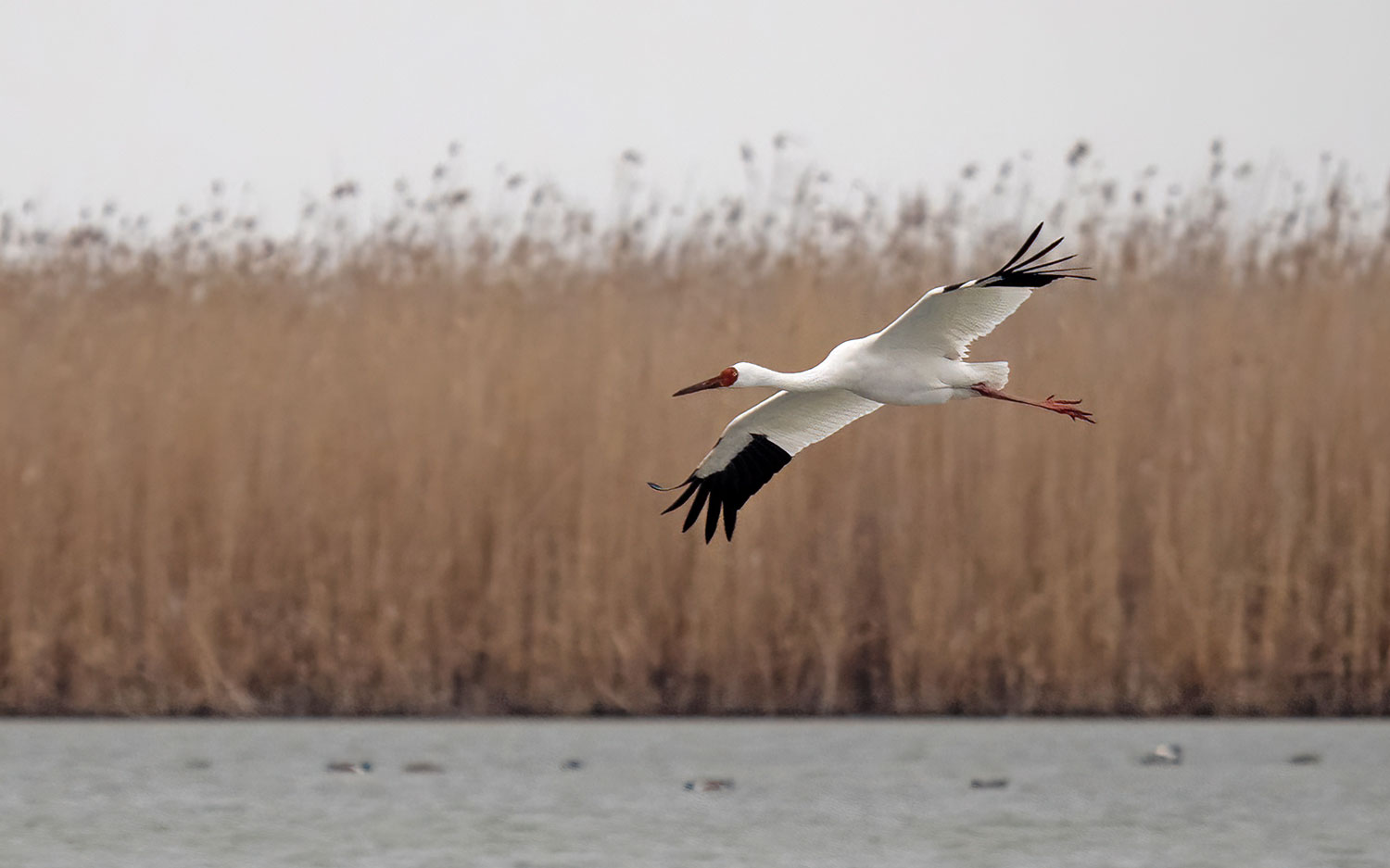Last Siberian Crane missing in action
Fears are growing among conservationists that the western population of Siberian Crane may now be extirpated following the failure of the last known individual to return to Iranian wintering grounds.
The plight of 'Omid' has made headlines in recent years as the increasingly old-aged bird has completed its annual migration alone between breeding grounds in the Siberian wilderness and its winter home of Fereydoon Kenar in Iran.
Omid typically arrives back in Iran during November but has failed to appear so far this winter, leading birders to suspect that he may have perished, therefore taking with him any remaining hope that the western population of this declining bird may be saved.

Omid the Siberian Crane photographed in Azerbaijan in March 2022 (Selmeczi Kovács Ádám).
Last winter, a captive-born female Siberian Crane, known as 'Roya', was released in Iran and soon partnered with Omid. The birds left together on their migration in early March, but birders anticipating the arrival of the cranes at a known stop-over site in Azerbaijan (where Omid was seen in 2020 and 2022) did not see either bird. It later came to light that Roya had been found alone in north-west Iran on 12 March and had been recaptured. Omid has not been seen since he left Fereydoon Kenar.
Siberian Crane is now recognised as Critically Endangered worldwide. Small numbers wintered in India until 2002, when they failed to return for the first time. An eastern population of around 2,000 individuals still persists, breeding in north-eastern Siberia and wintering at Poyang Lake in the Lower Yangtze River Basin in China, but is severely threatened by development of the Three Gorges Dam (and other dams) along the Yangtze River.

